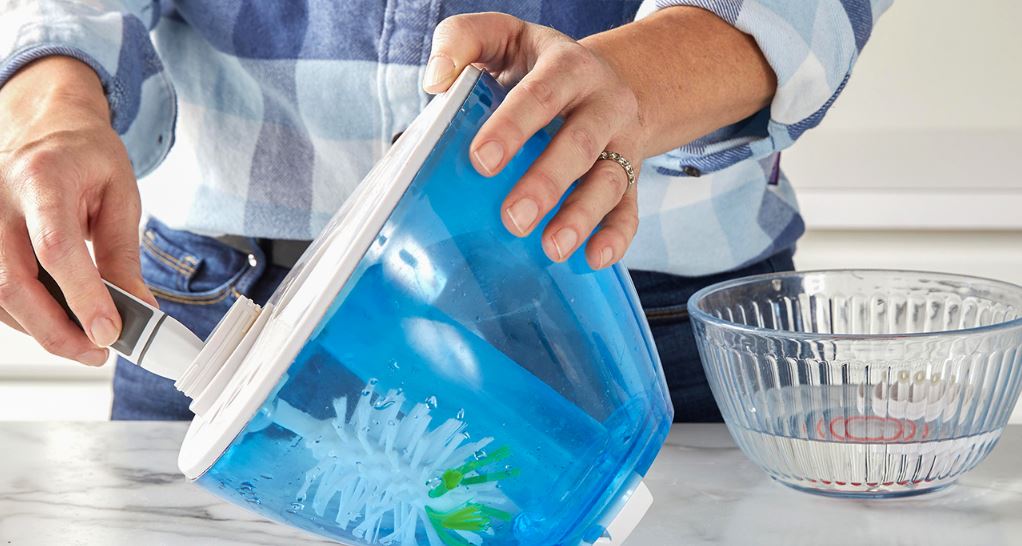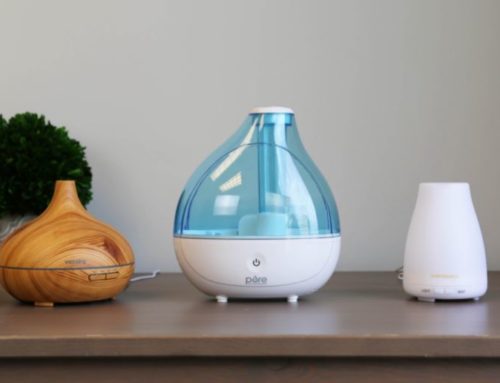If you reside in a region where the winter season is extremely cold and dry, purchasing a humidifier for your house is possibly one of the wisest steps you can take for your fitness and your indoor air quality. They’re an incredible appliance to buy to assist you to combat everything from the hype of static around the home to the start of common cold-weather illnesses and airborne infections. They even assist in protecting your skin from drying up when you crank the heat on.
Like any tool — mainly those which utilize water — this kind of appliance will need some essential maintenance and typical disinfection in order to operate at its best. Luckily, tidying up your humidifier is a short and simple procedure, and only gets effortless with routine maintenance.
What Is A Humidifier?
A humidifier establishes moisture in the atmosphere. That can be particularly beneficial in the winter season when the climate and indoor heating units can make the air harsh — and dry out your lips, eyes, skin, and nose. You should strive for 30% to 50% humidity in your house.
You can assess the degree with a device called a hygrometer that’s obtainable from most hardware shops. Suppose buying a humidifier if your degree is below 30%, particularly if you frequently have a sore throat, nose bleeding, or dry skin.
Below we have assembled a convenient guide to teach you how to clean humidifiers, what you will require to do so, and why you should sterilize your appliance frequently.
Steps To Clean Your Humidifier

Both cool mist and warm humidifiers employ an identical process, but some of the components may vary. Some brands may also possess elements that are dishwasher resistant. Check the brand’s manual to be safe.
Step 1:
When you unplugged the humidifier from the wall, you must first disassemble it entirely. Empty out the humidifier’s water vessel to initiate the cleaning procedure. Then relying on your specific model, unlatch or open any other detachable pieces and put everything separated for manageable recognition. If your specific appliance encompasses an air filter, ensure to detach it as well. Filters can be rinsed with a chill running water and then put aside to air dry.
Step 2:
Pour a sufficient amount of white vinegar into the base that it gets to all of the areas in which water often comes into contact, and put any washable smaller pieces into a large pot of vinegar to wet thoroughly. Leave everything to soak for at least 30 minutes to neutralize the dirt and then follow up by employing your soft brush to remove any stuck-on debris. Several humidifiers come with soft brushes for this very reason, but if your humidifier doesn’t have it then any soft-bristled brush should work. Smaller scrubs can be excellent for thorough cleaning of hard-to-reach spots.
Step 3:
Sterilizing your water vessel also needs about a half-hour wait period, so you might like to conduct this alongside the second phase. Consuming a mix of 1 teaspoon of bleach to 1 bottle of water, fill the tank at least halfway and swirl the solution around so that the entire inside is coated. You can also substitute 3% hydrogen peroxide for bleach if you prefer.
Step 4:
Take tap water to fully rinse the base, vessel, and all other parts, shake parts well to remove any trapped water. It may take multiple passes before the scents of your purifiers start to disperse, but rest assured that it will take place. Put all components out to air dry atop your fresh neat cloth; it will also assist to clear away any leftover scents.
Step 5:
Once all components have dried thoroughly, you’re allowed to reattach and begin again the use of your tool. Don’t ignore to displace the appliance’s air filter where adequate. Pour clean mineral-free water into the tank of your humidifier, plug it in and turn it on to enjoy the results of neat, calming humidity in your house once again.
Best Practices for Maintaining your Humidifier

Rinsing your humidifier every time you utilize it is the nicest way to protect the appliance. Here are multiple efficient tips to keep in mind:
- Do not enable the humidity to go above 50 percent in any area. Intense humidity can nourish mold and bacteria development. Utilize a hygrometer to assess humidity levels.
- Vacant, dry, and refill your humidifier each time you turn it on.
- Fill up distilled water in your humidifier to lessen the dispersion of minerals in the air.
- Stop plugging a humidifier shortly if you develop any breathing problems.
- Before you employ your humidifier every day, throw out any water residue in your water vessel. Wash out the tank well (involving the outside) and refill it. It will prohibit bacteria and mold from thriving in the enclosed tank.
Can You Clean The Humidifier Wick?
It’s favorable to resist trying to tidy up the wick filter in a humidifier. The wick is easily prone to damage, it doesn’t matter if you are delicate with it or not. If the wick is nasty, it’s good to replace it.
How Frequently Should You Rinse Your Humidifier?
A clean humidifier is vital for your household. Home appliance professionals generally suggest rinsing your humidifier frequently (at least once a week). Although it might look excessive, you certainly don’t like to breed any mold in your humidifier that could spread out into the atmosphere you breathe. If someone in your family suffers respiratory issues, involving asthma or horrible allergies, the humidifier should be rinsed even more often.
The Bottom Lines
Humidifiers assist keep your house protected in cooler weather when the air becomes drier, but they need some maintenance to proceed to operate smoothly. With these humidifier rinsing tips, you can maintain your appliance in good shape, and guarantee the moisture it’s emitting out is always neat and clean.
There are a number of humidifiers handy for buy that all need routine cleaning. Avoiding routine upkeep may leave your health at stake because mold, bacteria, and other factors can penetrate the air and your body.
Related Post: What Does a Humidifier Do?


